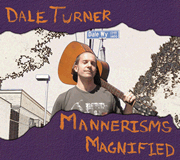|
Effective Stage Presence For the Open Mic and
Beyond
Performance Dynamics
By Spook Handy, MusicDish.com
Vol. I, No. 1
This series of articles is written with the beginner
and intermediate level performer in mind. It is also written primarily
for musicians that play instruments and sing during their performance.
However, with a little imagination these principles can be applied
to public speaking, teaching or reading poetry. These suggestions
are by no means original. Many of them come from more seasoned performers
of music and other arts who I site whenever possible.
MusicDish Network Advertisement

|
Performance Dynamics
I recently visited Tumulty's in New Brunswick, New
Jersey, to catch the Wednesday Night open mic run by JPat. The basement
room in which the open mic takes place is an excellent setting because
the only things going on there are the music and the bar. As usual,
it was a great night of music that varied in style and quality.
The room was quite full of college grads and twenty-somethings.
One thing that struck me was that some performers were able to get
the audience excited about their set while others seemed to fade
into the background. And the difference was not simply because some
people sang better or played their instruments better. More than
anything else the difference was their use of Dynamics.
What are dynamics and how do you use them?
Dynamics are the ups and downs of a musical piece.
Ken Trotta, who performed that night, put it this way. "A song is
like a roller coaster. Your job as a performer is to take people
along for the ride. So sometimes you play quiet, sometimes loud.
There are places for stops." You can also build up a song gradually
as is done in a song we all probably know, "Stairway to Heaven."
Or you can start a piece explosively as is done in Beethoven's Symphony
No. 5. You know DA DA DA DA!! That one. Yeah!
How can one learn to use dynamics?
Probably the best way to learn dynamics is to watch
other performers - both those you think are effective and those
you think are not. Notice how those who vary the volume or other
elements of their singing and playing usually put on a more engaging
performance than those who don't. Keep in mind that dynamics involves
more than just volume. It could be the inflection in the voice or
the particular way an artist attacks his instrument. I learned a
little about dynamics from the Italian Bluegrass great Beppe Gambetti.
Beppe has a way of playing his guitar softly yet energetically while
he sings, and at the end of a line he often strikes his guitar with
gusto. I asked him to show me his technique, and he showed me how
to flick the strumming wrist as if you had honey on your pinky and
a feather was stuck on it and you are trying to flick it off.
You can learn many techniques by simply asking other
performers how they do it. It's a great excuse to meet a musician
you admire and it is usually taken as a compliment. It's also a
great way to network with your peers. However, the final say as
to what dynamics to use and where and when to use them should come
from the song itself. If you really want to express a song to its
fullest extent you have to develop an intimate relationship with
it so that you know what the words really mean and what the music
is capable of conveying. Let the song take you on it own
unique roller coaster ride.
There are more elements to effective stage performance
than one could ever count, but dynamics is definitely among the
most noticeable. Ken Trotta said, "There's nothing worse than watching
someone get up on stage and play everything monotonically." So when
you think about spicing up your performance or getting people to
listen a little more closely to your music, ask yourself if there
is room for better dynamics. There probably is.
 Provided
by the MusicDish
Network. Copyright © Tag
It 2003 - Republished with Permission Provided
by the MusicDish
Network. Copyright © Tag
It 2003 - Republished with Permission
|

